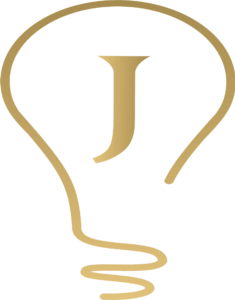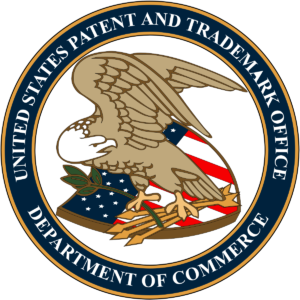Filing for a patent is one of the most exciting and essential steps you can take to protect your invention. But what if you find out later that your idea isn’t as new as you thought? It’s best to conduct a thorough patent search before filing. Be confident no one else filed for or has a patent on an invention similar to yours.

A patent search is an investigation to identify any previously issued U.S. patents or applications which contain relevant subject matter and could be used to reject the application. Therefore, a patent search is critical in determining whether to apply for a patent. It provides valuable information to help you achieve your business objectives. The search results determine whether the invention is novel and non-obvious—a legal requirement to obtain a valid U.S. patent.
A patent search will tell you two things: if the invention is novel and also if it is non-obvious. For example, if a patent was ever issued before for the same invention, it is not novel. If someone else could have invented your idea, then it is readily obvious. A patent search will explain whether or not your idea is worth filing for a patent.
A patent search can save thousands of dollars. But it’s also a way to learn. Just as a research paper or a patent application forces you to educate yourself on the state of knowledge in your field, preparing a good search forces you to do your homework. If you don’t know what’s out there, how will you say anything new?

Before starting your search, make a list of search term combinations—using similar words, different spellings, and synonyms—to describe your invention. For example, narrow down what type of machine or tool in which you are searching. You might begin your descriptive terms by saying: “The invention is a pair of gloves adapted to operate a keyboard and mouse.” From that description, you might search on specific terms such as: “gloves or handwear” AND (computer or electronic) …
The first thing to do is create a list of keywords to search. Here are some questions to help generate them.
Patents are just like any other document scanned and indexed by modern search engines. Google has a separate search engine called google patents (http://www.google.com/patents) that allows you to find patents by typing in a few words. The main benefit of Google Patents is that it is much easier to use than the USPTO’s website. As a result, it is much faster to find existing patents relating to your idea.
Google Patents is a database of over 6 million patent documents. This will help you learn how to quickly find critical information from a patent or group of patents.
For instance, if your idea was a hammer that had a curved handle to give more leverage. You could try searching for “hammer,” “leverage,” and “curve” to see if there have been any patents filed with those key terms.
The invention system helps you define your invention. It can help you assess the competition and develop a patent strategy. It’s essential to do a patent search early in your innovation process. Doing your searching before filing can save you time and money―and possibly prevent disappointment.

There is a growing awareness among innovators and investors of the value of intellectual property. Combining that with a greater willingness of patent holders to litigate has created an environment where even small businesses can be held liable for patent infringement. The odds of being sued over a patent today are substantially higher than they were in the past. Suppose a court finds that your company willfully infringed on an issued patent. In that case, it can triple the dollar amount of damages awarded by the court.
The U.S. patent office gives you the ability to search through their entire archive of patents. To make use of this, head to https://www.uspto.gov/patents-application-process/search-patents and click “Quick Search” on the right.
One mistake is that inventors usually neglect the 2nd half of their patent search. They mistakenly believe that if no one else has patented their EXACT idea, then they can move forward. Not true. A better way to think about this issue is to realize that everyone patents their concept differently. You need to know if anyone else has a patent for an idea that’s ‘substantially similar. If no one else has patented your exact idea, then they may have patented something close enough.
Now that you’ve found some related patents, it’s time to trawl through the text.
You can’t patent an idea; you can patent a function, so when looking for patents, try to think of anything that works in a similar way to your invention. There are so many patent documents that you can easily get lost. I suggest you utilize the “find tool” (control + F) function to search the records you find quickly.
When you’re trying to figure out whether a patent covers the idea you have in mind, the first thing to do is skim the patent. Note how many claims it has. Does it protect a method, a system, a device, or another kind of invention? Compare everything that you see to the idea you want to implement. If some claims are different from your idea, you can ignore them and get rid of that part of the patent. Sometimes only one of the dozens or hundreds of claims will apply to your particular idea.


An invention must be both new and non-obvious to get a patent. Suppose you want two patents to be considered incompatible. In that case, it is, therefore, insufficient to find merely one of their identical claims. Even if the claims in one patent are different from those in another, the examiner may say the invention is obvious based on the combination of the two.
Remember that no patent search is ever complete without looking through non-patent literature. There are also tons of great articles out there from industry experts and researchers who work in your field.
Patents are a vast area of law. Suppose you understand how to search patents and make sense of the terminology. In that case, the process becomes less intimidating and confusing.
As a general rule, focus your patent search efforts on resources available electronically. The main exception to this rule is when looking for older patents. Except for the most recent patents (usually published in printed format via HTML/pdf), all patents are now archived only on microform. Most libraries have converted microform to electronic format or scanned copies of their patents. Some microforms were never converted to digital format. Also, not every library puts their holdings online, which means you may need to travel to a library with the copies you seek to use them.
Additionally, several libraries (mostly special collections) have acquired older patents that were never registered with the USPTO. These patents will not be found in any electronic databases, and they can only be found by visiting those libraries directly.
Like most other engineering endeavors, patent searching requires specialized knowledge and skills. We can’t expect patent attorneys to write good software or industrial designers to do reasonable patent searches. Novice inventors often try to search for their patents. They read the ‘how to’ tips of novice internet authors on doing patent searches. They think that doing a Google search or simply typing keywords into the U.S. Patent Office patent database will protect them from patent infringement claims. Thus they believe they don’t need a professional-quality patent search by an experienced searcher.
Like most other engineering endeavors, patent searching requires specialized knowledge and skills. We can’t expect patent attorneys to write good software or industrial designers to do reasonable patent searches. Novice inventors often try to search for their patents. They read the ‘how to’ tips of novice internet authors on doing patent searches. They think that doing a Google search or simply typing keywords into the U.S. Patent Office patent database will protect them from patent infringement claims. Thus they believe they don’t need a professional-quality patent search by an experienced searcher.

When a patent attorney performs a patent search, they will look for patents, published patent applications, and printed publications that contain novel features. These are the features that might prevent your product from being patented.
Your patent search is the foundation of your future privileges and protections in the I.P. world, so you need to get it right.
A patent search is a critical element of the process of filing for a patent. Filing for a patent is expensive. You don’t want to waste your money if you aren’t the first to invent your particular product or concept. It is essential that you thoroughly search for patents on similar products and ideas before filing your application with the U.S. Patent Office (USPTO).



The Intellectual Property Attorney you hire to represent you and your business is one of the most important decisions you will ever make.
These are the values that guide this firm:
Having a lawyer is often the difference between success and failure. A good intellectual property lawyer is priceless. Without one, you’re basically out in the cold on your own. I have seen so much go wrong for clients’ businesses and even personal finances apart from the company.
– Jerry K Joseph Esq. Founding Attorney


© 2023 Law Office Of Jerry Joseph. All Rights Reserved